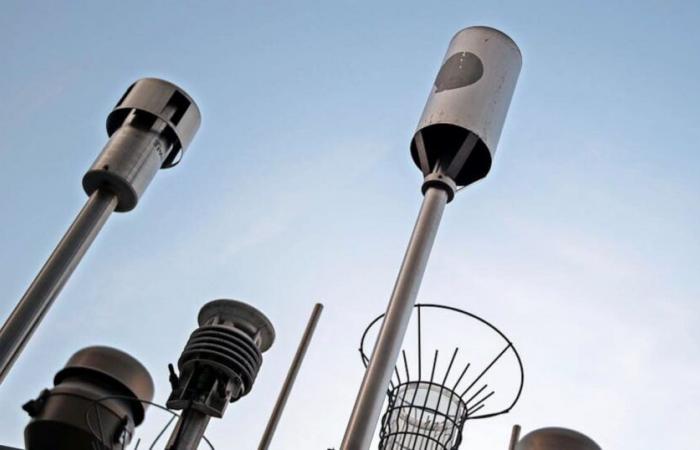Leipzig. What is the air quality like in Leipzig? Here we show the data from the measuring station in Leipzig-Mitte. It records the mass of fine dust particles up to PM10 in size per cubic meter of air. The decisive limit is 50 micrograms of these particles per cubic meter of air – this can be exceeded 35 times per year, then countermeasures must be taken to avoid EU penalties.
Read more after the Advertisement
Read more after the Advertisement
What is the current air quality in Leipzig?
How should the air quality measurements be assessed?
Three values are measured: fine dust, ozone and nitrogen dioxide. The air is “very bad” if one of the three values exceeds its highest limit: 100 μg/m³ for fine dust, 240 μg/m³ for ozone and 200 μg/m³ for nitrogen dioxide. The limit values for “bad” air are accordingly (in the same order) 51-100, 181-240 and 101-200. The air is “moderate” if a peak value is in these ranges: 35-50, 121-180 and 41-100.
Read more after the Advertisement
Read more after the Advertisement
The hourly average (nitrogen dioxide and ozone) or the hourly moving daily average (fine dust) is measured.
Despite better air: 240,000 premature deaths due to fine dust in the EU
Bad air is deadly: In the EU, many people still die prematurely because they are exposed to fine dust.
Source: dpa
What should I do if the air quality is “poor” or “very poor”?
Very bad: “Negative health effects can occur,” writes the Federal Environment Agency. “Anyone who is sensitive or has a damaged respiratory tract should avoid physical exertion outdoors.”
Bad: According to the Federal Environment Agency, sensitive people could experience adverse health effects. “They should avoid physically strenuous activities outdoors,” the agency says. “In combination with other air pollutants, even less sensitive people can react to the air pollution.”
Read more after the Advertisement
Read more after the Advertisement
Moderate: “Short-term adverse effects on health are unlikely,” writes the Federal Environment Agency. However, effects from combinations of air pollutants and long-term exposure to individual substances cannot be ruled out. The effects of the pollutants can be intensified by additional stimuli such as pollen, making effects more likely in sensitive groups of people (e.g. asthmatics).
Gut: Green light from the Federal Environment Agency: “Enjoy your outdoor activities, no adverse health effects are to be expected.”
Very good: “The best conditions for spending a lot of time outdoors,” says the Federal Environment Agency.
Did you know: How harmful are New Year’s Eve fireworks for the environment?
New Year’s Eve fireworks are not necessarily a big problem for the environment as a whole, says a spokesperson for the Federal Environment Agency. “Compared to the pollution throughout the year, this is not so relevant.” In the hours after midnight, there can be a lot of fine dust in the air, but later the pollution decreases again. How quickly this happens depends on the weather: If there is a bit of wind, the residue from the fireworks is quickly dispersed and blown away.
Read more after the Advertisement
Read more after the Advertisement
A so-called inversion weather situation with a stationary layer of cold air on the ground and no wind can lead to hours of fine dust pollution, especially in cities. However, individuals can easily avoid this by staying indoors for most of New Year’s Eve.
By RND/kha/dpa
LVZ






